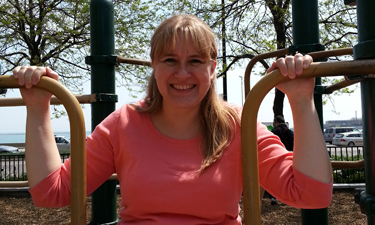 The announcement on the news was barely a blip on my radar: Our county council had a passed a five-cent tax on plastic bags. It wasn’t until I was standing in a store checkout with an armful of purchases a few months later that it finally sunk in. Everyone else in line was bringing their own bags, and I had none. The thought of an extra nickel or two added to my total didn’t faze me at all, but I was truly mortified about all of these people watching me buy a wasteful disposable bag.
The announcement on the news was barely a blip on my radar: Our county council had a passed a five-cent tax on plastic bags. It wasn’t until I was standing in a store checkout with an armful of purchases a few months later that it finally sunk in. Everyone else in line was bringing their own bags, and I had none. The thought of an extra nickel or two added to my total didn’t faze me at all, but I was truly mortified about all of these people watching me buy a wasteful disposable bag.
As Jeff Price explains in this month’s Operations article, social norms are powerful drivers of behavior that park and recreation departments can learn to employ in their marketing tactics. But what if we could apply social-norm expectations to other positive behaviors, like exercise? And what if you weren’t just seeing strangers out exercising, but your neighbors? Outdoor fitness zones or stations put exercise out for all the world to see, and I can’t help wondering if their presence will help acclimate people to the idea that exercise is a normal, everyday activity that our friends and neighbors do on a regular basis. As writer Carrie Madren discovered in this month’s cover story, these fitness zones are often heavily used, with people waiting in line for their turn. People see how popular the activity is in the neighborhood, give it a try and in turn are seen by still other people, perhaps creating a self-sustaining social-norm exercise feedback loop.
While it’s true that the entire nation is getting fatter, regional variations make it clear that social norms and local customs still play a role in fitness. Why do 24 percent of people in Tulsa smoke but only eight percent in San Jose? How does Boston spend 92 percent less than the national average per person on fast food? And while mild weather probably is a factor in more than half of Portland, Oregon’s residents exercising at least five times per week, where does the 30 percent of San Franciscans eating five servings of fruits and vegetables a day come from?
Park and recreation agencies have countless opportunities to influence the social norms of their communities through outreach, education, social media, social equity programs and high-visibility events like car-free street fairs. And many are using these tools to address our critical health issues while also doing some positive community building. Park and recreation departments are uniquely attuned to their communities’ social norms and how they can be used to bring positive change. In other words, we should all remember the value of setting a good example. Now, if you’ll excuse me, I have some reusable shopping bags to go buy.
Elizabeth Beard
Managing Editor
When to Succumb to Peer Pressure
May 1, 2013, Department, by Elizabeth Beard

